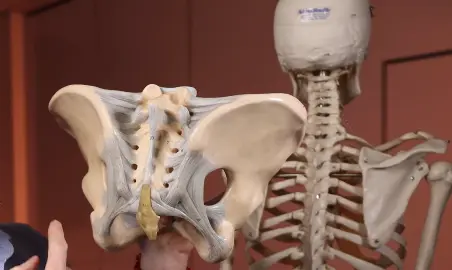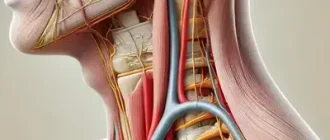Extensive research has been conducted on Coccydynia, also referred to as tailbone pain. It can occur due to different factors, including falling on the tailbone, extended periods of sitting on uncomfortable surfaces, or changes in the joints caused by arthritis or childbirth.
Usually, pain in the tailbone area tends to get better on its own within a few weeks or months. However, it may become worse if constipation is present, but it can be alleviated by having a bowel movement.
The Link Between Tailbone Pain and Coughing or Sneezing
Interestingly, some individuals report experiencing tailbone pain when they cough or sneeze. This phenomenon comes as a surprise for many, raising questions about the relationship between such bodily functions and tailbone discomfort.
The primary reason why tailbone pain might be observed during coughing or sneezing lies in the force that these actions exert. Both coughing and sneezing generate considerable pressure within the abdominal and pelvic region. This pressure can lead to discomfort or pain in the lower spine, including the tailbone area, especially if the coccyx is already sensitive or inflamed due to existing conditions like coccydynia.
Managing Tailbone Pain
There are a few ways to lessen the discomfort. A simple strategy is to sit forward in your chair. Additionally, using a cushion designed to alleviate pressure can be beneficial. It is highly recommended to use a cushion with a hole in the back, specifically under the tailbone, as it redirects pressure from the affected area.
To alleviate discomfort from tailbone pain experienced during bowel movements, it may be helpful to take stool softeners and consume more dietary fiber.
Preventing Tailbone Pain
Taking preventive measures can also minimize the possibility of experiencing such pain. Engaging in exercises such as the kneeling groin stretch can offer relief from tailbone pain which tends to occur after extended periods of sitting. This particular stretch focuses on the Iliopsoas muscle, which, when tight, can potentially contribute to tailbone discomfort. Therefore, performing these stretching exercises can effectively reduce and prevent potential tailbone pain in the future.
Tailbone pain can lead to more than just physical discomfort and can disrupt daily activities and overall well-being. If over-the-counter remedies and lifestyle adjustments fail to alleviate the discomfort, it is advised to seek medical assistance in order to determine the root causes and develop a personalized treatment strategy.
Final Advice
If you experience ongoing or severe pain in your tailbone when you cough or sneeze, it is important to seek immediate medical attention, as this could indicate more serious health conditions like infection or tumors. It is strongly advised to consult with a healthcare professional without delay.
About the Author
Reyus Mammadli is the author of this health blog since 2008. With a background in medical and biotechnical devices, he has over 15 years of experience working with medical literature and expert guidelines from WHO, CDC, Mayo Clinic, and others. His goal is to present clear, accurate health information for everyday readers — not as a substitute for medical advice.







